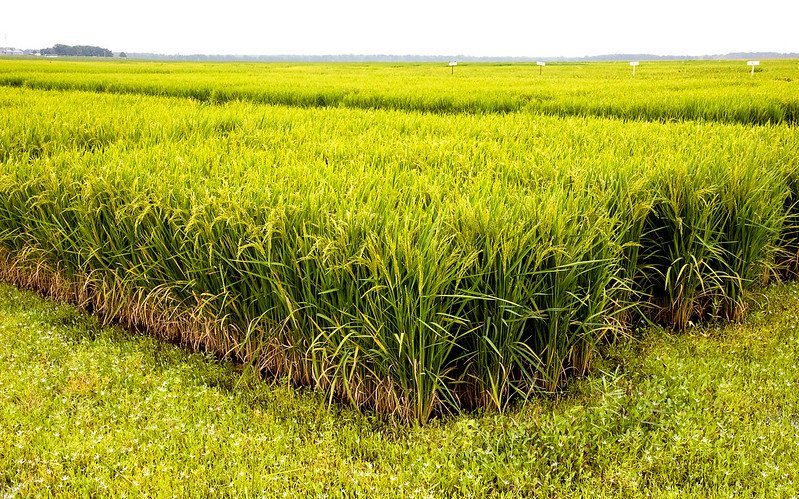High yield Paddy Farming Information Guide
Rice is an important food crop in India. The people of the country use rice in some form or the other every day. Whether it is from North India or South India or East India or West India, people of all classes use rice. For this reason, paddy is cultivated in almost every part of the country so that the availability of rice in people’s plates remains intact.
Nutrient Management in Paddy
Paddy is a high energy food item. It contains 76.05% carbohydrate, 20.25% fat, 6.7% protein, 0.93% fibre, 0.29% phosphorus and 1.15% ash. Apart from the varied uses of rice as a food grain, it is used in the textile industry due to its abundance of starch. Straw is also used for animal feed, compost making, hut shade and packing. Paddy canes are used for animal feed and oil extraction.
Read More: Barseem Farming Information Guide For Beginners.

If you are a farmer and want to do advanced and modern cultivation of paddy, then you must know the methods of its cultivation. It is very important to know how to prepare the field for paddy, how to choose the seeds, how to control the pests and diseases in the paddy.
Despite the availability of irrigation potential in the country, only about 60-62 percent of the paddy area is irrigated, while the paddy crop requires the most water among the food crops. After transplanting the crop under certain conditions, water should be kept in the field for a week at the time of buds bursting, earing flowers, blooming and grain filling.
The flowering stage in paddy crops is very sensitive to water. On the basis of tests, it has been found that continuous watering is not necessary to get high yield of paddy.
Therefore, it is appropriate to irrigate 5-7 cm a day after the water disappears from the field surface. If there is a shortage of water due to lack of rain, then irrigation must be done. Availability of phosphorus, iron and manganese elements increases due to the availability of water in the field and weeds also grow less.
Read More: How to cure Acidic Soils?
It is also worth noting that it is also harmful to keep more than 5 cm of water in the field for a long time while the buds emerge in the paddy. Therefore, it is very necessary to make arrangements for drainage in the areas where water remains full. If this is not taken care of then production will be adversely affected.
Paddy is an important food crop of our country. At the national level, paddy is cultivated in about 45 million hectares. The production capacity of different varieties of hybrid paddy is about 80 to 100 quintals per hectare whereas the best yielding varieties of paddy have 50 to 60 quintals per hectare. Several varieties of hybrid paddy that mature in 110 to 140 days have been developed and recommended for planting in different regions of the country.
What is “SRI” (SRI) method for paddy?
SRI method is based on the proper spacing of each plant on the land. By this proper aeration and water management will make suitable plant growth. In this method, 10 to 12 days old birch is 25×25 cm. Planting is done with soil at a distance of one bit per hill. In the cultivated field, 5 kg of seeds are spread evenly in 250 sq. m. In the transplanted field, a drainage channel is made every 2 meters and corner or rotary weeder is used 5 times every 10 days after 10 days of transplanting. Due to this, the growth of roots increases and more buds emerge. At the time of use of weeder, less water should be kept in the field. This increases the yield by 10 to 15 times more than the normal method. Hybrid paddy or normal/local paddy varieties can also be cultivated by “Sri Vidhi” technique.

Recommended variety
It is necessary to select hybrid rice varieties according to the climate of the region. Our farmers can do successful cultivation of paddy by adopting ‘Shri Vidhi’ technique from high yielding local paddy variety to certified paddy variety which gives high yield for local area. As per climatic condition you can choose variety from your nearest research station.
Read more: Best Method For The Integrated Pest management.
Nursery preparation
After the first rain in May-June, plow the selected field for nursery twice. Make the land level by running a pat in the field. The nursery is prepared in the field. Growth is good in tilled fields. The nursery should be high, flat and 1 meter in width. Make a 30 cm width drain to drain the water. Before the final preparation of the field, apply 100 kg of decomposed cow dung and Nitrogen, phosphorus and Potash at the rate of 500 500 grams per 100 square meters. For planting per hectare area, 20 grams of seed should be applied in 750 square meter area. In Shree method, 5 kg of seeds are put in the nursery in 250 sqm.

Seed rate
15 kg per hectare and 5 kg per hectare in SRI method.
Seed treatment
Soak the seed in water for 12 hours and before sowing in the nursery, treat the seed with Carbendazim (Bavistein) fungicide at 2 grams per kg of seed. If the nursery is to be prepared in the plowed field, then spread the treated seed on a flat hard surface in shade and cover it with soaked jute sacks. Spray water on the sacks 2-3 times a day. The seed will germinate after 24 hours. Then scatter the germinated seed in the cultivated field.
Read More: High Yield Potato Farming Information Guide
Sowing time
For Kharif season crop, sow seeds from first week to last week of June. In hot weather, sowing should be done from mid-January to mid-February.
Nursery maintenance
Irrigation should be done in the nursery 2-3 days after the sowing of germinated seeds. After that apply light irrigation as required. The nursery should be kept free from weeds. After about 12-15 days of growth of weeds, granular insecticide Carbofuron-3G, 250 grams per 100 square meters should be used in the nursery.
Farm preparation
Hybrid rice can be cultivated in both irrigated and unirrigated land. After the first rain, at the time of plowing in May and one month before planting in the field, decomposed manure or compost at the rate of 5 tonnes per hectare should be used. In Shree method, up to 10 tonnes of organic manure is used. Scatter Neem or Karanj empty at the rate of 5 quintals per hectare in the field at the time of plowing three weeks before transplanting. Irrigation and churned should be done 15 days before transplanting so that weeds rot and get mixed in the soil. One day before transplanting, reapply and the field should be leveled and transplanted.
Read More: Best Farming Method For Green Pea
Field Clearance:
After uprooting the weeds from the nursery along with the soil along with the roots, wash the roots and before transplanting the weeds should be treated by immersing the roots in Chlorpyrphosh insecticidal solution (1 ml per liter of water) overnight (12 hours). For transplanting, swarms of 15-20 days of age are used. After planting the seedlings, do 2 to 3 cm shallow depth in the leveled soil of the field. If there is water logging in the field, drain the water before transplanting. Use chemical fertilizers before planting. Planting only one or two birches at one place keeping the distance between rows and plants 20 cm x 15 cm respectively. The rows should be kept in the north-south direction.

Use of chemical fertilizers
Urea in hybrid paddy: Apply Nitrogen, Phosphorus & Potash at the rate of 150:75:90 kg per hectare respectively, apply 1/4 quantity of Nitrogen in the field after complete and 3/4 quantity of Potash after removing water from the field. Topdressing should be done after 3 and 6 weeks after transplanting with urea in three equal parts of the remaining 3/4 quantity of Nitrogen, and in the standing crop at the time of emergence of the remaining earrings. Use with (Single Super Phosphate) so that deficiency of Sulfur can be removed. DAP Also, use 25 kg per hectare of sulfur (gypsum).
Read More: High Yield Bhendi Production Guide
Irrigation and weeding
Light irrigation of the field after 5 days of sowing of beech. After this, water should be maintained till the height of 4.5 cm in the field till the time of filling of milk in the grains. Re-transplant the weeds within 5 to 7 days of transplanting in the vacant places and at the place of dead weeds. Weeding should be done 3 weeks after transplanting, and another after 6 weeks. Use rotary or corner weeder after applying manure to the crop planted in the line. Before topdressing of urea, weeding must be done.

Pest management
Apply granular insecticide (Furadan) 3 g (30 kg/ha) 3 weeks after transplanting of succulents in the field. This was followed by Monochroophos in 35 BC. (1.5 liters per hectare) or Chlorpyriphos 20 EC (2.5 liters per hectare) twice at an interval of 15 days to keep the crop free from pest attack. 500 liters of water is required for spraying one hectare. For the control of odoriferous insect, spray 25 kg of Indosulfan 4% dust or Kwanalphos 1.5% dust at the rate of 25 kg per hectare or Monocrotophos 35 EC. (1.5 liters per hectare). The use of above mentioned granular and liquid insecticides will also prevent gall midge and stem borer insects. Kwanalphos 25 EC is used for the prevention of leaf folder. Spray (2 liters per hectare).
Drain water from the field for sheath blight disease and bacterial diseases. Apply additional amount of potash (30 kg/ha) to the field by topdressing. Delay the remaining instalments of Urea.
Harvesting, drying and storage

Harvest the crop when 80 percent of the grains are ripe. After harvesting, dust and dry the grains well and store them.




